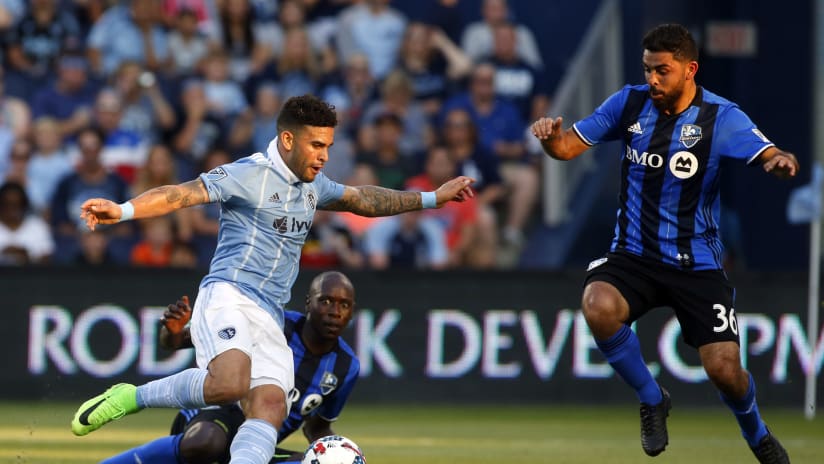Sporting Kansas City traded forward Dom Dwyer to Orlando City SC on Tuesday in exchange for $400,000 in General Allocation Money, $500,000 in Targeted Allocation Money as well as up to $700,000 in future Allocation Money based on Dwyer’s performance in Orlando.
So how can Sporting KC use the funds it acquired in the trade? We provide a breakdown of GAM and TAM below.
General Allocation Money (GAM) can be used in the following ways:
- To "buy-down" a player's salary budget charge as part of managing a team's roster, including buying a salary budget charge below the League maximum of $480,625. For example, a team may "buy down" a player earning $500,000 to a budget charge of $300,000 by using $200,000 of General Allocation Money.
- To sign players new to MLS (a player who did not play in MLS during the previous season).
- To re-sign an existing MLS player.
- To offset acquisition costs (loan and transfer fees) or to reduce the salary budget charge of a Designated Player to a minimum of $150,000.
- Clubs may trade their GAM to another club.
- GAM may also be used in connection with the extension of a player's contract for the second year, provided the player was new to MLS in the immediately prior year.
Targeted Allocation Money (TAM) may be used in the following ways:
- To sign a new player, provided his salary and acquisition costs are more than the maximum salary budget charge of $480,625.
- To re-sign an existing player, provided he is earning more than the maximum salary budget charge of $480,625.
- To convert a Designated Player to a non-Designated Player by buying down his salary budget charge at or below the maximum salary budget charge. If Targeted Allocation Money is used to free up a Designated Player slot, the club must simultaneously sign a new Designated Player at an investment equal to or greater than the player he is replacing.
- Clubs may use up to $200,000 of TAM (amounts through 2017) to sign new Homegrown Players to their first MLS contract. It cannot be used on Homegrown Players previously signed to MLS.
- Clubs may trade their TAM to another club.
For more information about Major League Soccer's roster rules and regulations, click here.




